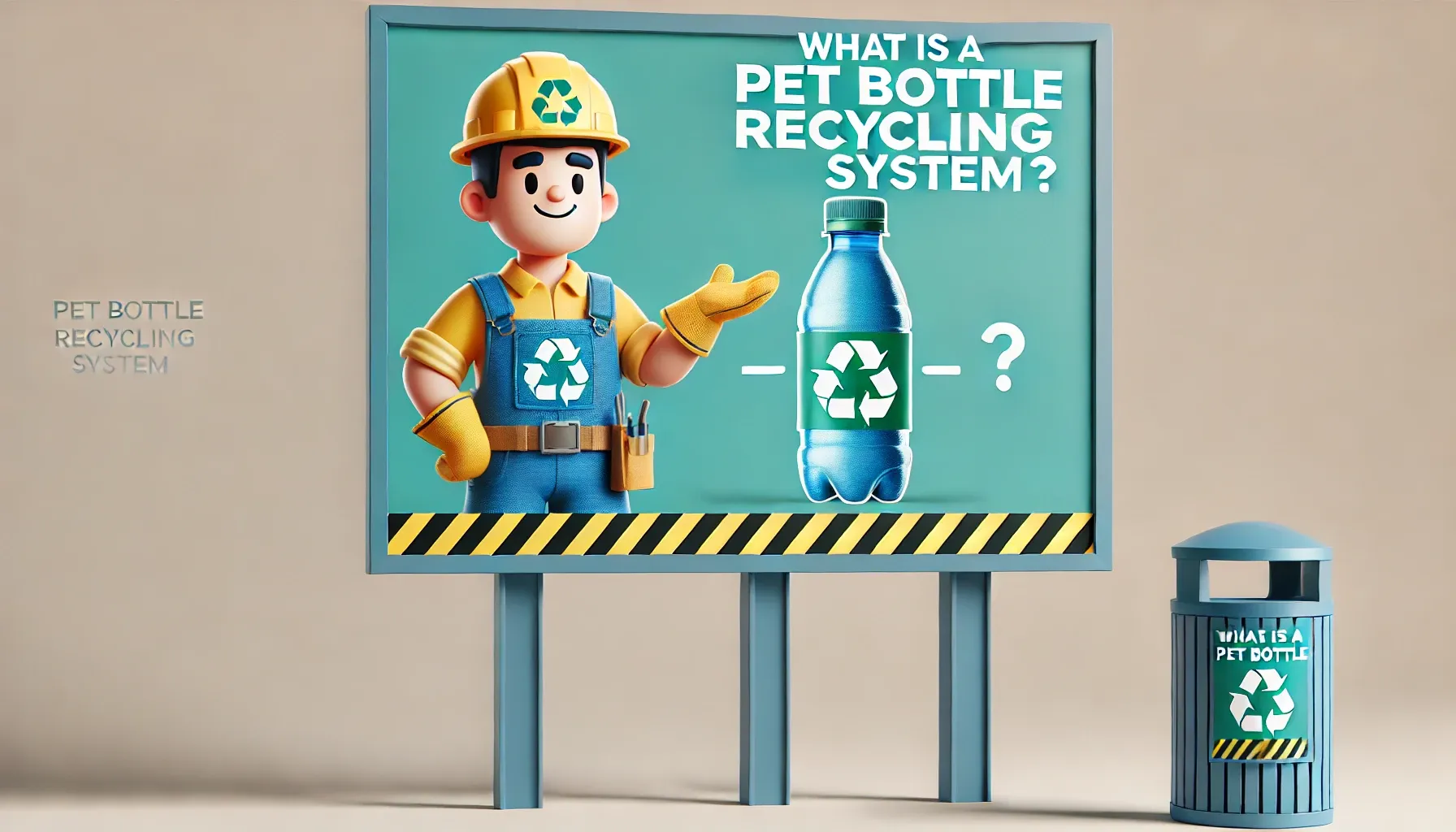A Waslijn voor het recyclen van PET-flessen is een geavanceerd, geïntegreerd systeem van machines ontworpen voor één hoofddoel: het transformeren van sterk vervuilde, in balen geperste PET-flessen tot uitzonderlijk schone flessen. PET-vlokken (rPET). Deze schone output dient als waardevolle grondstof, klaar om te worden gebruikt voor de productie van nieuwe producten van hoge kwaliteit, waardoor de kringloop in de circulaire economie effectief wordt gesloten.
Waarom een PET-waslijn van hoge kwaliteit onmisbaar is
PET-flessen na gebruik zijn nooit schoon. Ze komen bij een recyclingbedrijf aan met een heleboel onzuiverheden die minutieus moeten worden verwijderd. Als dat niet gebeurt, is het resulterende rPET van lage kwaliteit en heeft het beperkte commerciële waarde. Een professioneel plastic recyclingsysteem is ontworpen om deze verontreinigingen frontaal aan te pakken:
- Etiketten & Lijm: Etiketten van papier en kunststof (PVC, OPP) bevestigd met industriële lijm.
- Caps en halsringen: Gemaakt van andere polymeren, meestal PP (polypropyleen) en PE (polyethyleen).
- Vuil en aanslag: Grond, zand en ander organisch materiaal hebben zich opgehoopt tijdens het verzamelen.
- Vloeibaar residu: Suikers, oliën en andere restjes.
- Gemengde verontreinigingen: Ander plastic, metaal, glas en divers afval.
Alleen door deze onzuiverheden systematisch te verwijderen, kunt u de hoogzuivere rPET-vlokken produceren die nodig zijn voor winstgevende toepassingen, zoals voedselverpakkingen of hoogwaardige polyestervezels. Dit is precies wat een goed ontworpen PET-waslijn bereikt.
De 8 essentiële fasen van een PET-flessenwaslijn
Hoewel specifieke configuraties kunnen worden aangepast, omvat elke effectieve PET waslijn een meerfasenproces om een zuiver eindproduct te garanderen. Zo werkt het:
Fase 1: Balen breken
Het proces begint met samengeperste balen PET-flessen die worden ingevoerd in een balenbreker. Deze machine decomprimeert de balen op agressieve wijze en scheidt de flessen om een consistente en gelijkmatige stroom naar de rest van de waslijn te garanderen.
Belangrijkste voordeel: Creëert een gestage, beheersbare materiaalstroom, voorkomt verstoppingen en maximaliseert de doorvoer.
Fase 2: Voorsorteren en de-labelen
Hier worden grote, duidelijke verontreinigingen (zoals stenen, metalen en niet-PET-kunststoffen) verwijderd. Dit wordt vaak gevolgd door een mechanische ontlabelaardie wrijving gebruikt om meer dan 80-90% van de flesetiketten af te scheuren voordat het wasproces zelfs maar begint.
Belangrijkste voordeel: Beschermt nageschakelde apparatuur zoals granuleermachines tegen beschadiging en verbetert de efficiëntie van de wasfasen.
Fase 3: Nat malen/pletten
De flessen worden in hun geheel in een snelle granuleermachine of breker. Deze machine, die vaak met water werkt, snijdt de flessen in uniforme vlokken (meestal 12-16 mm). Het water helpt bij het voorreinigen van het materiaal en vermindert de slijtage van de messen.
Belangrijkste voordeel: Het vermalen tot vlokken vergroot het oppervlak aanzienlijk, waardoor het reinigingsproces veel effectiever en efficiënter wordt.
Fase 4: Etiket- en stofscheiding
Een luchtclassificator, vaak een Zig-Zag Scheiderwordt gebruikt om de resterende etiketfragmenten te verwijderen. Een cycloonsysteem genereert een luchtstroom die de lichtere stukjes papier en plastic etiketten wegblaast van de zwaardere PET-vlokken.
Belangrijkste voordeel: Verwijdert efficiënt verontreinigingen met een lage dichtheid, waardoor de vlokkenstroom aanzienlijk wordt gezuiverd.
Fase 5: Warm & koud wassen
Dit is het hart van het reinigingsproces. De vlokken ondergaan verschillende wascycli:
- Heet wassen: De vlokken worden gewassen in een hete wasmachine met water verwarmd tot 85-95°C, meestal met een natronloogoplossing. Deze krachtige stap steriliseert het materiaal, lost alle resterende lijm op en verwijdert oliën en vettige resten.
- Wrijvingswassen en -spoelen: Wrijvingswasmachines met hoge snelheid schrobben de vlokken tegen elkaar en de daaropvolgende spoeltanks spoelen alle resterende reinigingsmiddelen en verontreinigingen weg.
Belangrijkste voordeel: De hete wassing is cruciaal voor het oplossen van taaie kleefstoffen en het garanderen van de hoogste reinheidsgraad voor de rPET-vlokken.
Fase 6: Float-spoelscheiding
De gemengde vlokken gaan een vlotter-zinktank gevuld met water. Deze fase maakt op briljante wijze gebruik van de eenvoudige fysica van dichtheid. De zwaardere PET vlokken (dichtheid ~1,33 g/cm³) zinken naar de bodem, terwijl de lichtere PP/PE doppen en ringen (dichtheid <1 g/cm³) float to the top and are skimmed off.
Belangrijkste voordeel: Dit is de meest cruciale stap voor het scheiden van verschillende soorten plastic, waarbij een PET-zuiverheidsgraad van meer dan 99% wordt bereikt.
Fase 7: Ontwateren en drogen
Vocht moet bijna volledig worden verwijderd. Dit is een proces in twee stappen:
- Mechanisch ontwateren: Een centrifugale (centrifugale) droger verwijdert eerst het grootste deel van het water, waardoor het vochtgehalte snel daalt tot ongeveer 2-3%.
- Thermisch drogen: De vlokken gaan dan door een thermisch droogsysteem met hete lucht, dat het uiteindelijke vochtgehalte verlaagt tot lager dan 1%.
Belangrijkste voordeel: Droge rPET-vlokken zijn stabiel voor opslag en voldoen aan de strenge eisen voor verwerking verderop in het proces, zoals pelletiseren of extrusie van vellen.
Fase 8: Kwaliteitscontrole en verpakking
In de beste productielijnen gaan de afgewerkte vlokken door een laatste "vlokkensorteerder" om alle overgebleven gekleurde of niet-PET vlokken te verwijderen. Een stofverwijderingssysteem zorgt voor een schoon eindproduct voordat het in grote jumbozakken wordt verpakt, klaar voor verkoop of intern gebruik.
Belangrijkste voordeel: Garandeert de hoogst mogelijke productkwaliteit, waardoor het een hogere marktprijs oplevert, vooral voor recycling van flessen naar flessen.
De zakelijke argumenten voor een geavanceerde PET-recyclagelijn
Investeren in een effectieve Waslijn voor het recyclen van PET-flessen is niet alleen een milieubeslissing; het is een strategische bedrijfsbeslissing. Een betrouwbaar systeem met hoge doorvoer creëert aanzienlijke waarde door goedkoop afval om te zetten in een industrieel goed waar veel vraag naar is. De belangrijkste voordelen waar toonaangevende bedrijven naar zoeken zijn:
- Uitgang met hoge zuiverheid: Produceert consistent schone rPET-vlokken met lage verontreinigingsniveaus (PPM).
- Maximale efficiëntie: Water- en energieverbruik optimaliseren terwijl het maximale tonnage per uur wordt verwerkt.
- Automatisering en betrouwbaarheid: Lagere arbeidskosten en minimale stilstandtijd voor een continue, winstgevende werking.
- Waardecreatie: Post-consumer afval omzetten in een waardevolle grondstof die de circulaire economie en uw bedrijfsresultaten versterkt.
Conclusie: Uw partner in PET-recycling
A Waslijn voor het recyclen van PET-flessen is een hoeksteentechnologie voor elke serieuze speler in de kunststofrecyclingindustrie. Door onzuiverheden methodisch te verwijderen in de geïntegreerde stadia, is dit systeem essentieel voor het produceren van de beste kwaliteit kunststofrecycling. rPET-vlokken waar de moderne, duurzame markt om vraagt. Voor bedrijven die efficiëntie, betrouwbaarheid en winstgevendheid nastreven, is het kiezen van de juiste waslijn een cruciale investering in de toekomst.



